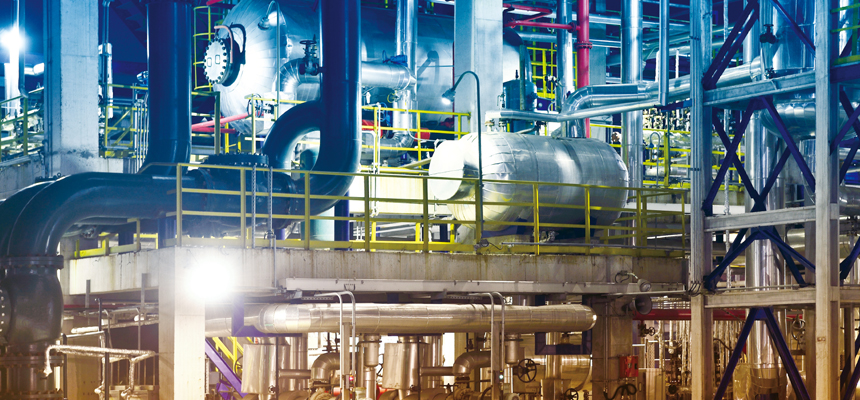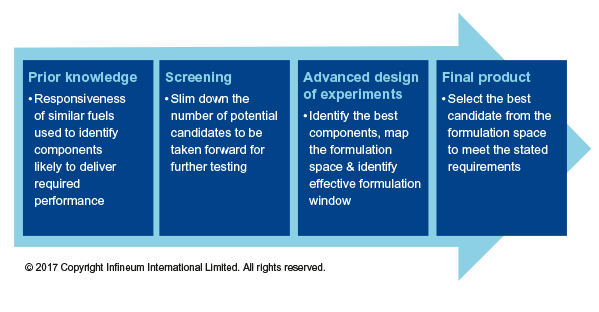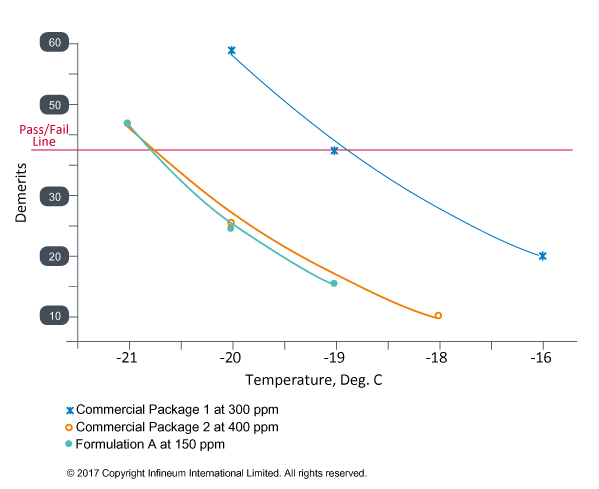Fuels
Reported sludging incidents rise
04 November 2025
13 September 2017
Modern formulation approach delivers value for refiners

Crude oil supply variation, refining complexity and a wider choice of blend components are increasing the variability of diesel fuel production, which impacts the effectiveness of cold flow additives. Infineum’s Dhanesh Goberdhan looks at the challenges and explains how modern formulation methodology can identify the optimum additive formulation to enable the cost effective production of fit for purpose fuels.
In recent years, a number of global fuels trends have significantly increased complexity for refiners. These have come from a combination of factors including growing demand, refinery capacity additions, changes in diesel trade flows, crude supply evolution and the introduction of more complex refinery processes. These trends have increased the variability of diesel fuel and introduced new challenges for diesel fuel formulators.
Despite initiatives to incentivise the electrification of the powertrain, projections out to 2040 show that diesel and gasoline will continue to dominate the fuels mix, together accounting for more than 50% of global demand.
While gasoline is set for modest growth in the long term, the expansion of the vehicle fleet and use of diesel in the marine bunker sector mean demand for middle distillates could increase by 10 mb/d in 2035.
To meet demand to 2040, cumulative capacity additions are expected to reach 20 mb/d – with Asia Pacific accounting for over 60% of the global additions.
However, significant differences in regional demand patterns are also expected. A slight drop in demand in the mature markets of Europe and North America will be offset by strong growth in China and the wider Asia Pacific region. These changes in product demand and refining capacity are likely to impact trade flows. Taking diesel as an example, the Middle East is forecast to become the biggest regional exporter by 2025, tripling volumes traded. North America and CIS volumes should remain stable, Europe’s diesel imports are likely to fall and Latin America could become the world’s largest importer of diesel. Within Asia, Japan and Korea look set to be the principal diesel exporters.
The supply and demand imbalances that exist across and within regions will drive the trend for inter- and intra-regional diesel fuel movements.
This movement of diesel fuel means refiners must meet various country specifications and ensure the fuel is fit for purpose in the destination market. As global fuel trends lead to more complexity for refiners, fuel additives are increasingly seen as key enablers in meeting quality requirements and maximising refinery economics. However, they are sensitive to variations in fuel characteristics; not always in ways that are easily understood.
The highly dynamic supply and demand environment has resulted in significant evolution of the global crude slate. In recent years we have seen:
These developments impact the range of crude quality available to refineries, which in turn challenges diesel fuel formulators because the molecular composition of the middle distillate is similarly variable.
Complexity is further compounded by the increased sophistication of modern refineries. Today’s diesel is unlikely to be simply blended from the straight run middle distillate. Additional units have been added to process larger numbers of different blend streams, and these can be made available to the middle distillate stream to make up the diesel pool. By mixing streams with different properties to produce diesel the refiners potentially have more flexibility. However, these additional streams typically come from units designed to improve the economics of the refinery by upgrading lower quality products.
Another driver for change is legislation, arising from environmental concerns, which means the shift to lower sulphur fuels continues. The diesel streams therefore require additional processing to remove sulphur and the degree of hydrogenation and cracking impacts the molecules in the final diesel blend.
Further complexity is introduced by the use of non-fossil fuel streams, which might be biofuels or fuel components derived from gases. All of these changes mean the complexity and variability of the molecular composition in diesel fuel has changed dramatically.
 A number of factors are contributing to the increased complexity of diesel fuels
A number of factors are contributing to the increased complexity of diesel fuelsWhen diesel fuels are subjected to low temperatures, some of the heavier n-alkanes precipitate from the fuel as wax crystals. In untreated fuels, the crystals form thin, flat rhombohedral plates, which can grow quickly – reaching up to 5 mm across. These crystals can block fuel filters designed to protect diesel injectors and vehicle pumps. This can lead to fuel starvation to the engine and, as a consequence, loss of power and/or stalling and potential failure of the engine to start. Cold flow additives can be added to diesel fuel to interact with the wax so that smaller needle-shaped crystals are formed, which are less likely to cause filter blocking.
However, the increasing variation in fuel composition not only impacts diesel fuel properties but also its response to cold flow additives. Although this poses a significant challenge for formulators, it also presents an opportunity to identify high performance formulations, which can be of greater value than using single components.
To achieve the best performance and to maximise the economic benefits of cold flow additives, the components need to be carefully matched to the composition of the fuel.
To better understand the diesel fuel space, Infineum has characterised and analysed a variety of different types of diesel fuel blends and used modern formulation methodology, incorporating experimental method design, to assess additive performance. This allows the best additive mix for each fuel to be formulated, which ensures the production of fit for purpose fuels and benefits the whole value chain.
To identify the optimum blend of components, Infineum has developed a systematic process for additive formulation. The process is based on understanding the key factors that influence fuel responsiveness to different components and uses modern formulation methodologies to deliver products which are tailored to fit specific requirements.
 The Infineum methodology provides a logical systematic formulation route to design fit for purpose products
The Infineum methodology provides a logical systematic formulation route to design fit for purpose productsThe formulation methodology has been used to design an improved cold flow product. The formulation, selected using the systematic process, was tested for CFPP and WAS to confirm that it showed a significant benefit over existing commercial packages that had previously been identified for this type of fuel. An operability rig was used to confirm that the advantages seen in the bench test would translate into real world operability benefits.
 Operability rig results demonstrate the new additive can match the performance of commercial packages at lower treat rates
Operability rig results demonstrate the new additive can match the performance of commercial packages at lower treat ratesThe potency of the resulting formulated package means the additive treat rate can be reduced by over 50% and the results still at least match the performance of the best of the tested commercial additives.
Understanding how to formulate cold flow packages that will ensure performance targets are met robustly across a range of diesel fuels is increasingly important.
This can facilitate an increase in CP/CFPP deltas, which allows oil companies to optimise the barrel split and increase refinery flexibility. Well-designed additive formulations are key enablers in making fit for purpose fuels and can help to create value for all stakeholders.
Sign up to receive monthly updates via email
